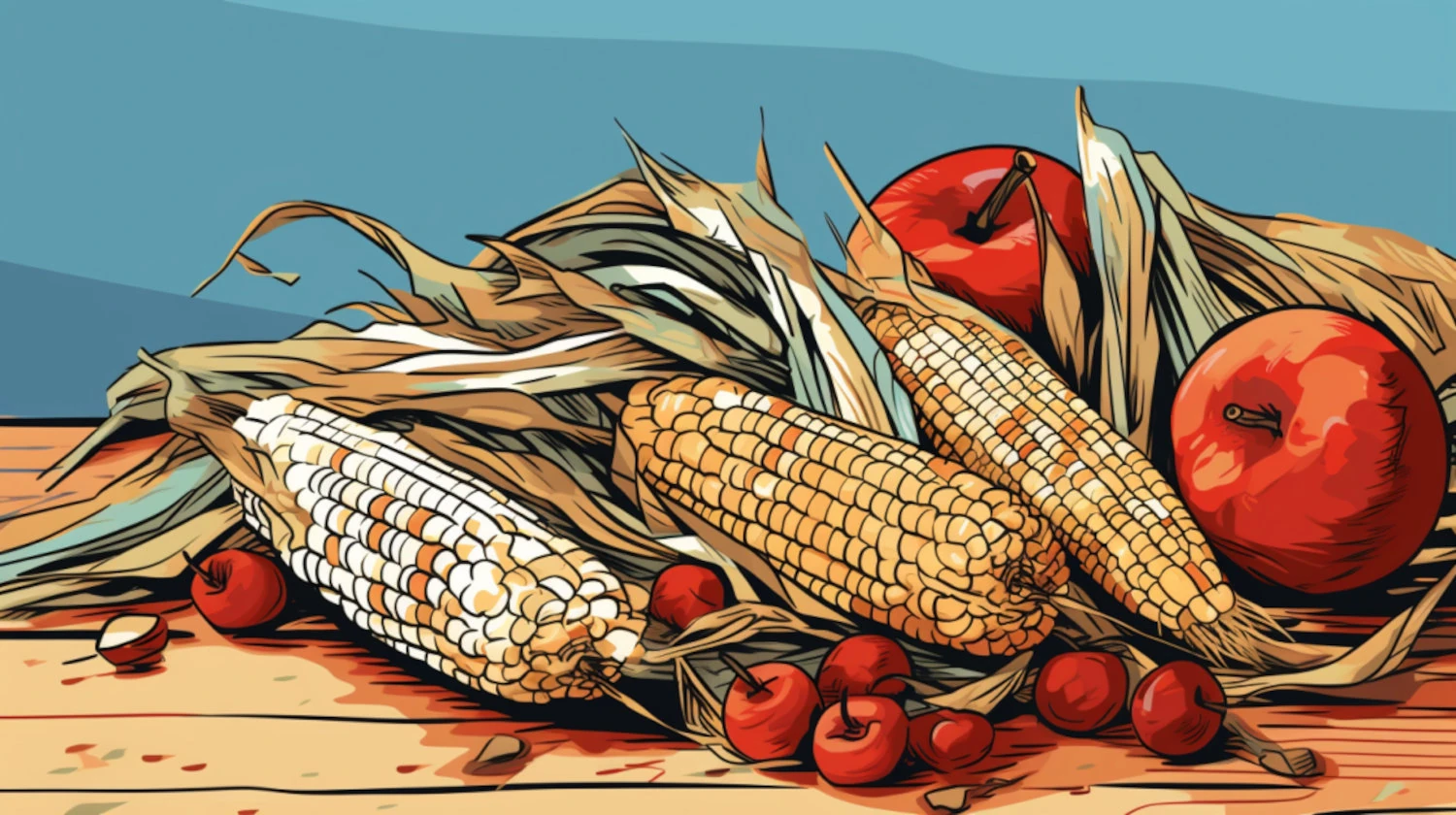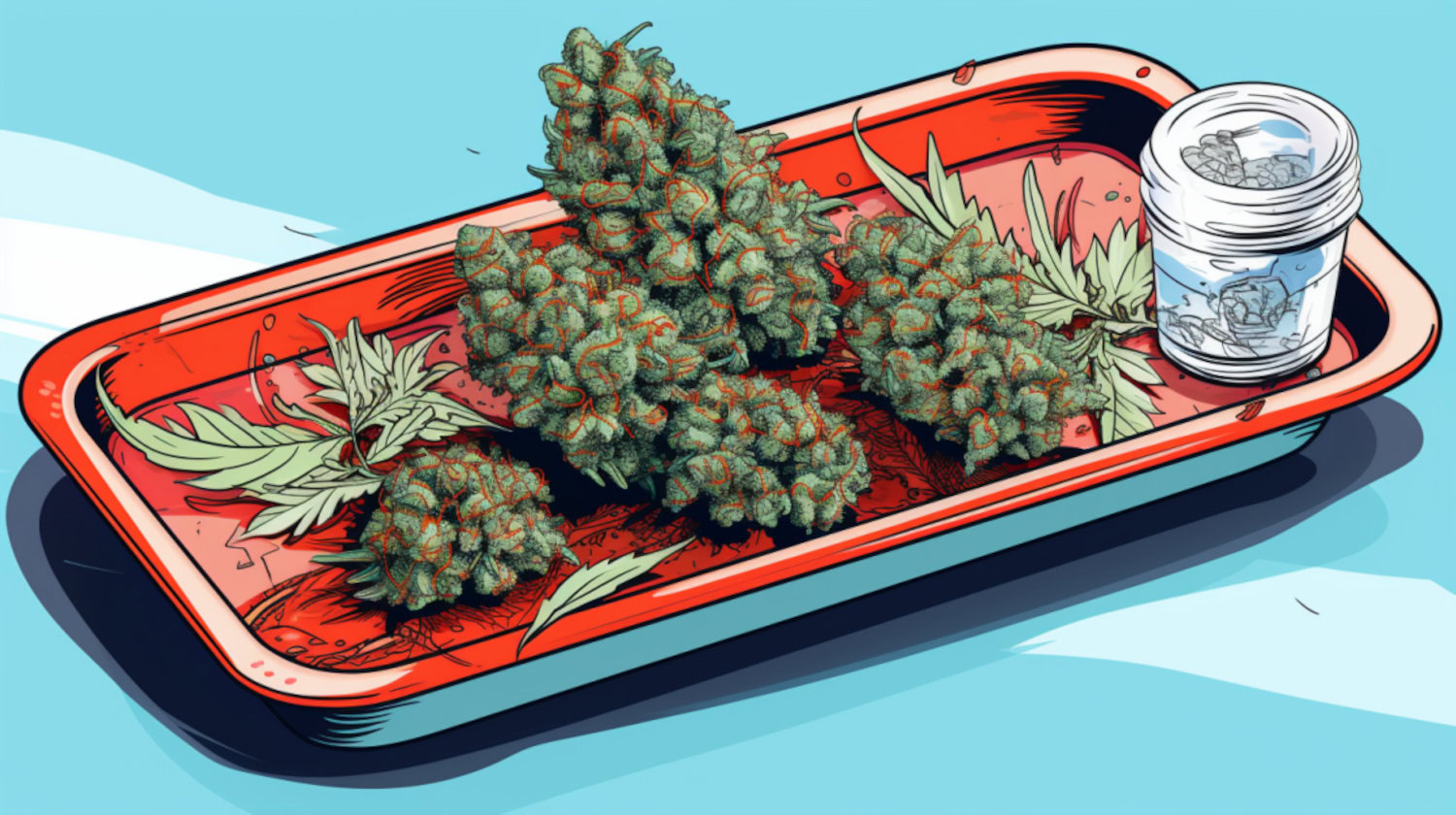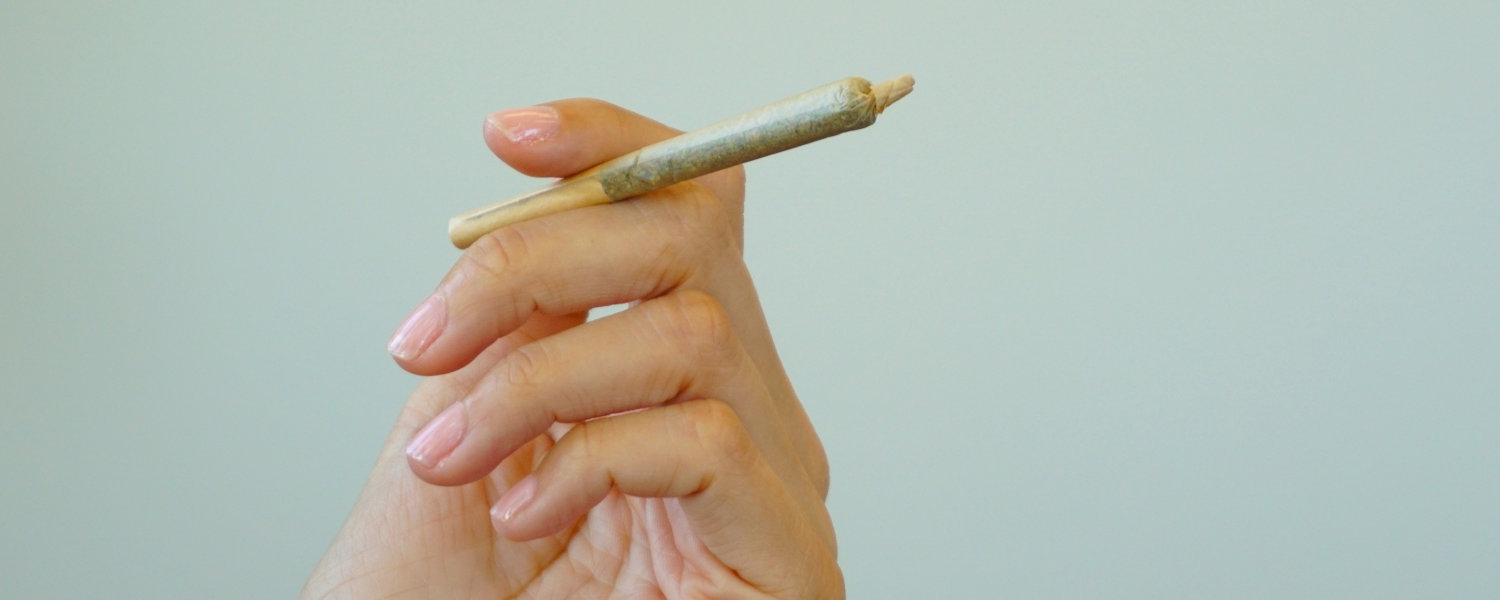In This Article
- What Can I Use as a Rolling Paper If I'm Out?
- Corn Husks
- Apple
- Lettuce/Cabbage Leaves
- Flower Petals
- Coffee Filters
- Why Use Alternative Rolling Papers?
- What to Avoid When Choosing a Rolling Paper Alternative
- Avoid Harmful Materials
- Experiment Cautiously
- Bleached Materials
- Inks and Dyes
- How to Make Your Own Rolling Paper Substitute
- Materials You Need to Roll a Joint With Corn Husks:
- Step One: Prepare the Husks
- Step Two: Soften the Husks
- Step Three: Pack Cannabis
- Step Four: Roll It Up
- Step Five: Seal, Light, and Enjoy
Key Takeaways About Rolling Paper Alternatives
- Corn husks, apple bongs, natural coffee filters and lettuce leaves are all popular rolling paper alternatives.
- Rolling paper alternatives are helpful when you’re out of papers and may offer a more natural or creative experience.
- Avoid materials containing bleach, inks, and dyes.
For many cannabis enthusiasts, rolling papers are a must have tool in their cannabis consumption kit. Rolling joints is a classic go-to method for quick, easy consumption.
Beyond the thin sheets of paper most are familiar with, there are other reliable rolling paper alternatives that many consumers have at home. From corn husks to apples, the community has tried several methods and reported their experiences. Knowing what’s safe to use can help you become more versatile and resourceful, expanding your overall cannabis experience.
What Can I Use as a Rolling Paper If I'm Out?

These alternative rolling paper options can add a unique twist to your smoking experience.
Corn Husks
Corn husks have a reputation for producing smooth, even hits. They burn slowly, making them an ideal alternative for a pleasurable smoking experience.
To roll cannabis with corn husks, dampen the husks slightly and let them sit for a few minutes. The moisture helps them stick together, making it easy to roll the bud.
Apple
Technically, any dense fruit or vegetable will work, and that also includes pineapples, zucchini, cucumbers, and pears. With them, you can make natural pipes that work well as alternative rolling papers.
Lettuce/Cabbage Leaves
Note that lettuce and cabbage leaves won’t burn as slowly as some other alternatives. However, they can still work in a pinch, and they provide a unique flavor to the smoke. Use large, sturdy lettuce or cabbage leaves as a rolling surface.
Flower Petals
Certain flower petals, like rose petals, are a natural and safe option to smoke. Rolling with dried rose petals can also add a touch of elegance to your smoke session.
- To create a rose joint, line up the dried rose petals carefully on a rolling tray to the desired size joint. The key here is patience, as this step may take some time.
- You’ll need to seal the rose petals together using saliva before packing cannabis into them.
- Roll the bud into the petal joint paper as you would normally. Tuck the bottom edges underneath the top edge, sealing it with saliva.
If you only have fresh rose petals, toast them in the oven at 250°F before rolling.
Coffee Filters
Coffee filters are a convenient alternative and are generally considered safe for smoking. Just ensure you’re using clean, unused, unbleached coffee filters.
They are often larger than needed for rolling, so trim the excess down to get your desired joint paper size.
- Once you pack the cannabis into the center, fold the coffee filter over the bud. Make a cylinder-like shape and roll it tightly from one end to the other.
- Seal it with a lick or other type of moisture. Then, twist the ends to secure the cannabis on both sides.
Why Use Alternative Rolling Papers?
There are several reasons someone might turn to a rolling paper substitute.
- Potential Health Drawbacks: Many rolling papers contain additives or are bleached during the paper processing, which can introduce unwanted chemicals into your smoke session.
- A More Natural Experience: Using a rolling paper substitute, such as an apple pipe, may provide a more natural smoking experience without the interference of synthetic ingredients.
- Experimentation: Some consumers are looking for a new, creative way to consume cannabis. The sense of novelty and exploration can add a layer of excitement to cannabis consumption.
- Creativity: Traditional papers may not be readily available for you. Knowing other possibilities is valuable when you don’t have access or the budget to accommodate papers
. - Environmentally Concious: Some consumers opt for natural rolling paper alternatives as a way to reduce their carbon footprint.
What to Avoid When Choosing a Rolling Paper Alternative
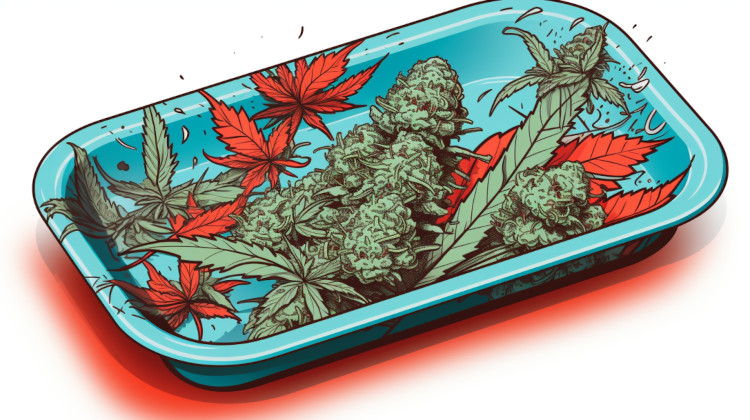
Using a rolling paper substitute can be convenient and creative, but it’s essential to be aware of certain safety considerations.
Avoid Harmful Materials
Some materials, like glossy papers, may release toxic fumes when heated, which can be potentially harmful to your health. It’s crucial to avoid any coated, treated, or otherwise processed materials.
Experiment Cautiously
Don’t use just anything as an alternative. Do some research beforehand. Likewise, try to test a small sample to ensure it doesn’t produce any harsh or unpleasant odor or smoke.
Bleached Materials
Bleached papers, like pages out of magazines or books, and print paper should be avoided. The bleaching process introduces potential chemicals into the paper, releasing harmful compounds when burned. When inhaled, these compounds may pose health risks.
Inks and Dyes
Many papers, especially those found in magazines or books, contain dyes or inks that are not intended for inhalation. They can produce toxic fumes that are harmful to the respiratory system.
In some cases, you may not have anything available to serve as a rolling paper alternative. If that happens, you might consider making weed gummies or other cannabis edibles instead.
How to Make Your Own Rolling Paper Substitute
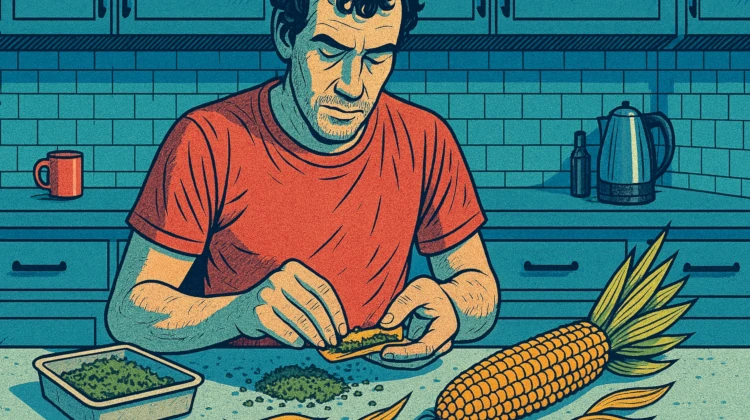
Corn husks serve as a fantastic, all-natural alternative to rolling paper at home.
Materials You Need to Roll a Joint With Corn Husks:
- Dried corn husks
- A small bowl of water
- Ground cannabis flower
Step One: Prepare the Husks
Select a dry, clean corn husk. Ensure it’s free from any excess silk, debris, or dirt. Cut it to your desired joint paper size.
Step Two: Soften the Husks
Dampen the corn husk by dipping it in a small bowl of water to make it more pliable for rolling. However, don’t oversaturate it! You only need the husk to be slightly damp.
Step Three: Pack Cannabis
Load your flower into the center of the corn husk. The amount depends on personal preference, but try to avoid overloading it. It’ll make rolling much easier.
Step Four: Roll It Up
Next, fold the sides of your corn husk over the bud. Try to create a cylinder shape. Begin rolling tighter from one end to the other. Ensure the cannabis stays well-enclosed within the husk during this process.
Step Five: Seal, Light, and Enjoy
Finally, secure your new corn husk joint by sealing it with saliva or another small amount of moisture. Do this along the edge of the husk to help it stick together.
Once it’s sealed, it’s ready to light. Light the end evenly and enjoy the smoke! While it might not be as convenient as a pre-roll, it does offer something unique to your sesh.
The information in this article and any included images or charts are for educational purposes only. This information is neither a substitute for, nor does it replace, professional legal advice or medical advice, diagnosis, or treatment. If you have any concerns or questions about laws, regulations, or your health, you should always consult with an attorney, physician or other licensed professional.

